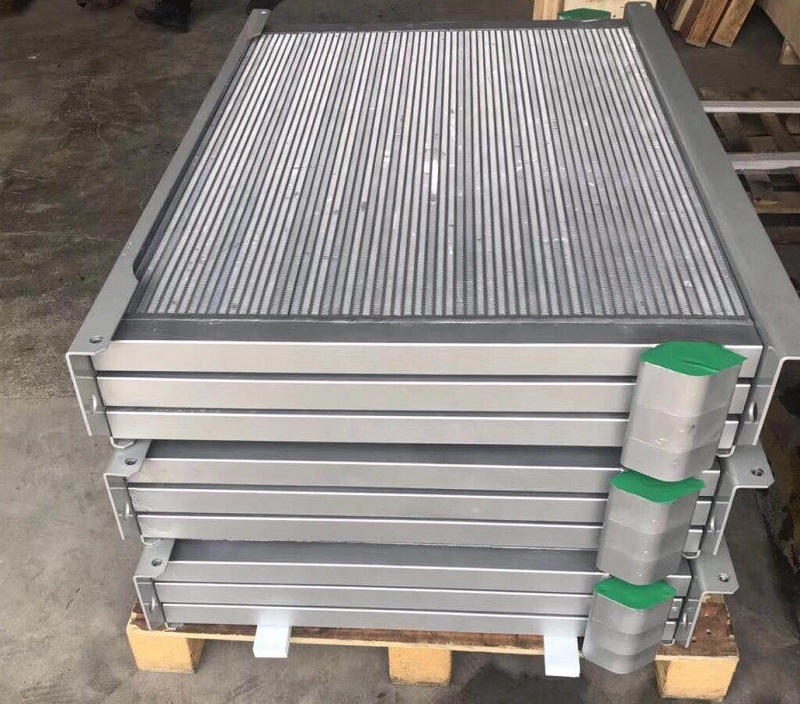Heat Exchangers vs Intercoolers
2024-01-01Leave a message
About Intercoolers
Some industrial manufacturing processes generate a significant amount of heat, which must be removed to maintain equipment integrity and prevent changes in the final product. Therefore, the use of intercoolers and heat exchangers is quite common. Although it is easy to confuse the two, this article will emphasize the distinct differences between these two types of process cooling equipment.
Heat Exchanger or Intercooler?
People often confuse terms like "intercooler" and "heat exchanger" without understanding their differences. Lets clarify things here. Well discuss various aspects of intercoolers that you need to know. Before deciding to use a heat exchanger or an intercooler device, industrial process managers must understand each device and its principles of operation.
By definition, a heat exchanger is a general term used to describe equipment that pulls heat generated by industrial systems, allowing for rapid cooling. Heat exchangers typically consist of pipes filled with a cooling medium, using thermodynamics principles (the flow of heat energy between two contacting media) to eliminate heat during the combined processes.
In simple terms, an intercooler is a cooling device designed to eliminate the heat generated by air compression devices. Intercoolers are commonly found in turbocharged engines, where their role is to restore the air temperature within the compressor to near ambient air values. The intercooler cools the air before it enters the engines intake, earning it the "inter" prefix.
Heat Exchangers vs. Intercoolers
Considering the various aspects we have mentioned so far, it is now easy to see the differences between intercoolers and heat exchangers. The term "heat exchanger" can broadly define cooling devices that exchange heat between two media. Meanwhile, an intercooler is a specific form of cooling device that achieves cooling within the air compressor assembly.
Furthermore, the term heat exchanger is more flexible in terms of the cooling support it provides, as there are different variants customized for most industrial cooling applications. Examples include:
- Shell and tube exchangers
- Boilers and evaporators
- Double-pipe heat exchangers
- Plate heat exchangers
These types of heat exchangers play a crucial role in some industrial processes, including refining and cooling, fuel gas systems, petrochemical manufacturing, and petroleum distillation.
How to choose an Intercooler?
Before deciding to use an intercooler, there are some key factors to consider to ensure the selection of the most compatible device.
1. Intercooler type (air-cooled, water-cooled).
2. Expected system temperature.
3. Scale of cooling operation.
4. Maximum compressed air flow rate.
Intercooler Type
Depending on the manufacturers design and operator preferences, intercoolers can be air-cooled or water-cooled. While both configurations effectively cool compressed air, the availability of the cooling medium is a critical selection criterion.
Air-cooled intercoolers can be used in almost any environment, utilizing ambient air to extract heat from the relevant process. Water-cooled intercoolers require a steady flow of cold water to efficiently exchange heat with the heated industrial process. Without continuous water flow, a water-cooled intercooler becomes an impractical choice.
Expected System Temperature
Each industrial application requires the compressed air flowing through it to have a unique temperature. When deciding which type of intercooler to integrate, operators must pay attention to the incoming air temperature into the exchanger and the expected heat readings after cooling. Only an intercooler capable of achieving satisfactory outlet pressure should be considered.
Scale of Cooling Operation
Intercoolers of various sizes and heat ratings are available for cooling turbocharged engines. Matching the appropriately sized intercooler to the cooling process is crucial for operational efficiency and the lifespan of related process components.
Maximum Compressed Air Flow Rate
The most effective intercooler must achieve optimal cooling at the maximum air flow rate of the connected compressor. This is another critical factor that all operators must consider when selecting intercooler equipment.
Low flow rate operations may benefit from smaller-sized intercoolers. In contrast, large-flow processes are best served by equipment with larger surface areas, allowing for quicker cooling to the desired outlet temperature.
Intercooler Alternatives
In operations where integrating an intercooler is impractical, other heat exchanger devices can be continuously installed with air compression devices. Aftercoolers are heat exchange devices that can quickly cool air just exiting the compressor.
The setup of this process cooling equipment is similar to intercoolers, with tubes filled with water, extracting heat from the compressed air (water-cooled type) or exposing compressed air pipes to cold ambient air (air-cooled type). This device can rapidly reduce the temperature of compressed air to between 5-20 degrees Fahrenheit.


